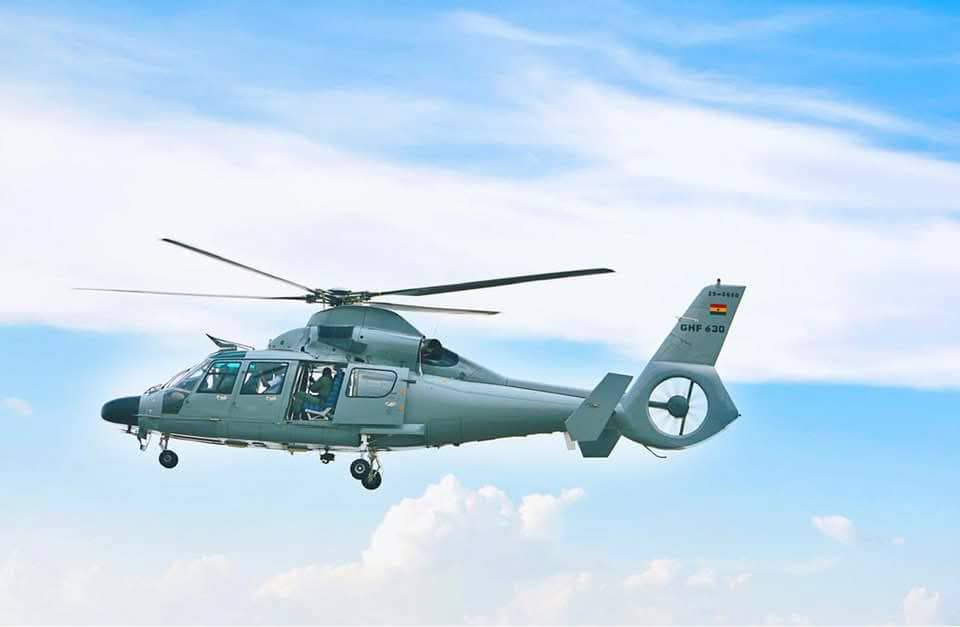The devastating crash of a Harbin Z-9 military helicopter in Ghana on Wednesday, August 6, 2025, which claimed the lives of eight high-profile individuals, including Defence Minister Dr. Edward Omane Boamah and Minister for Environment Alhaji Dr. Ibrahim Murtala Mohammed, has drawn attention to the aircraft’s troubled safety record globally.
The incident near Adansi Sikaman in the Ashanti Region is the latest in a string of fatal crashes involving the Chinese-made light utility helicopter, raising renewed questions about the aircraft’s reliability, design integrity, and its continued use by militaries across the developing world.
A helicopter with a history of tragedy
The Harbin Z-9, a Chinese license-built variant of the French Eurocopter AS365 Dauphin, has been in service since the 1990s. While it has been widely exported and praised for its versatility and affordability, its operational history is stained with multiple fatal crashes in Africa and Asia over the past decade.
A detailed review of public crash records reveals at least eight significant incidents involving Z-9 helicopters between 2012 and 2025, resulting in the deaths of over two dozen military personnel and government officials, and raising alarming concerns about systemic safety weaknesses.
Cambodia – July 2024 & July 2014
Cambodia suffered two major Z-9 crashes in a decade.
In July 2024, a helicopter disappeared for two weeks before its wreckage was discovered on a remote mountaintop, with both pilots confirmed dead.
A decade earlier, in 2014, another Z-9 crashed near Phnom Penh, killing four out of five officers on board, including two generals.
Namibia – April 2014
Namibia’s Defence Force lost six lives when a Z-9 helicopter crashed near Grootfontein while en route to Windhoek.
The aircraft reportedly encountered difficulties shortly after takeoff.
Cameroon – May 2019
A Cameroonian Z-9, carrying three top Divisional Officers and four others, went down in the restive North West Region.
The crash killed at least one official and reportedly resulted from a poor landing.
The incident highlighted the risks associated with operating the aircraft in rugged or conflict-prone zones. Cameroon had already lost another Z-9 in 2015.
Mali – January 2023
A dramatic video captured the crash of a Malian Air Force Z-9 helicopter in Kati.
The aircraft suffered a technical malfunction mid-flight and slammed into the ground. Miraculously, all the crew survived.
China – August 2015
Even in its home country, the Z-9 has had fatal episodes.
In 2015, a crash during a military parade rehearsal in Beijing reportedly killed three crew members and injured others, raising concerns about its performance even in controlled conditions.
Zambia – December 2012
A Zambian Air Force Z-9 experienced a power failure during takeoff, spiralled out of control, and came to a stop near a tent. Though no one on board was killed, a civilian on the ground was injured.
Widespread use despite risks
Despite its track record, the Harbin Z-9 remains a staple of military aviation fleets in at least 15 countries, including Ghana, Zambia, Namibia, Mali, Cameroon, Cambodia, Pakistan, Kenya, Djibouti, Equatorial Guinea, Laos, Bolivia, Myanmar, Mauritania, and China.
Its popularity stems from its relatively low cost, multi-role functionality (transport, search and rescue, anti-submarine warfare, and surveillance), and China’s expansive defence export programme.
In Ghana, the Z-9 has been used primarily by the Ghana Navy and Air Force for transport, maritime surveillance, and limited tactical operations.
The exact cause of the August 6 crash is still under investigation, though aviation analysts are already pointing to the aircraft’s concerning safety profile.
Political and strategic implications
The Ghana crash has not only taken a human toll but has also prompted questions about the country’s procurement strategy for military equipment.
The Ghana Armed Forces are expected to issue a preliminary crash investigation report in the coming weeks.
The Harbin Z-9 remains grounded pending inspection of Ghana’s remaining fleet.
A painful reminder
As Ghanaians mourn the loss of some of the country’s most prominent public servants and military personnel, the crash of the Harbin Z-9 serves as a painful reminder of the cost of compromised air safety—especially in aircraft with a troubling global track record.
The world will be watching Ghana’s next steps—whether it chooses to ground the aircraft permanently or continue flying a helicopter that has, time and again, left behind smoke, wreckage, and sorrow.


